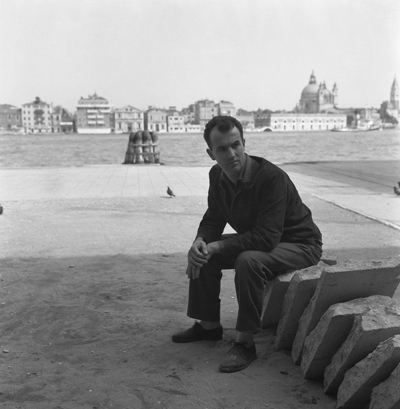Luigi Nono: Il Canto Sospeso (1956)


 |
Luigi Nono was born in the city in which he would spend much of his life, Venice, in 1924. As a young composer he was deeply involved with new trends in music, particularly the serial ideas promulgated at the Darmstadt new music courses during the 1950s. His earliest compositional influences were the composers of the second Viennese school, Schoenberg and Webern. After marrying Schoenberg's daughter Nuria, he was literally be able to call Schoenberg his father. Nono saw progressive politics and progressive music as being necessarilly related. An avowed Marxist and leading member of the Italian communist party, Nono felt that in espousing modern compositional technique he was also promoting political views. He wrote in 1969, "I realized that it was no difference whether I was writing a score or helping to organize a strike. They are just two sides of the same coin." To this end, Nono's music stands out for its deep involvement in political affairs. In the music and texts, one finds references to the Algerian revolution, the concentration camps of Auschwitz and political upheaval in Vietnam, Cuba and South America. For his texts he chose the writings of Lorca, Pavese, Ungaretti and Machado and became increasingly reliant on the voice, which he saw as an ultimate expression of humanity, often in conjunction with the latest technical advances in electronic sound processing. For Nono, the composer needed to be involved in life, needed to study history, gather experience, and be abreast of the latest advances in science, technology and art in order to more fully be an active participant in society. Nono also pioneered new ways of listening to music. From the quietest sounds, to microtonal and one-note music, to new possibilities of spatializing a sound, Nono was constantly seeking a way for the listener to participate in the experience of the sound. Similarly, Nono worked in close collaboration with a few select musicians to develop new techniques and ideas, encouraging them to think of sound in a different way. |

|
Text ... muoio per un mondo che splenderÓ con luce tanto forte con tale belaezza che il mio stesso sacrificio non Ŕ nulla. Per esso sono morti millioni di uomini sulle barricate e in guerra. Muoio per la giustizia. Le nostre idee vinceranno. |
I am dying for a world which will shine with light of such strength and beauty that my own sacrifice is nothing. Millions of men have died for this on the barricades and in war. I am dying for justice. Our ideas will triumph. |